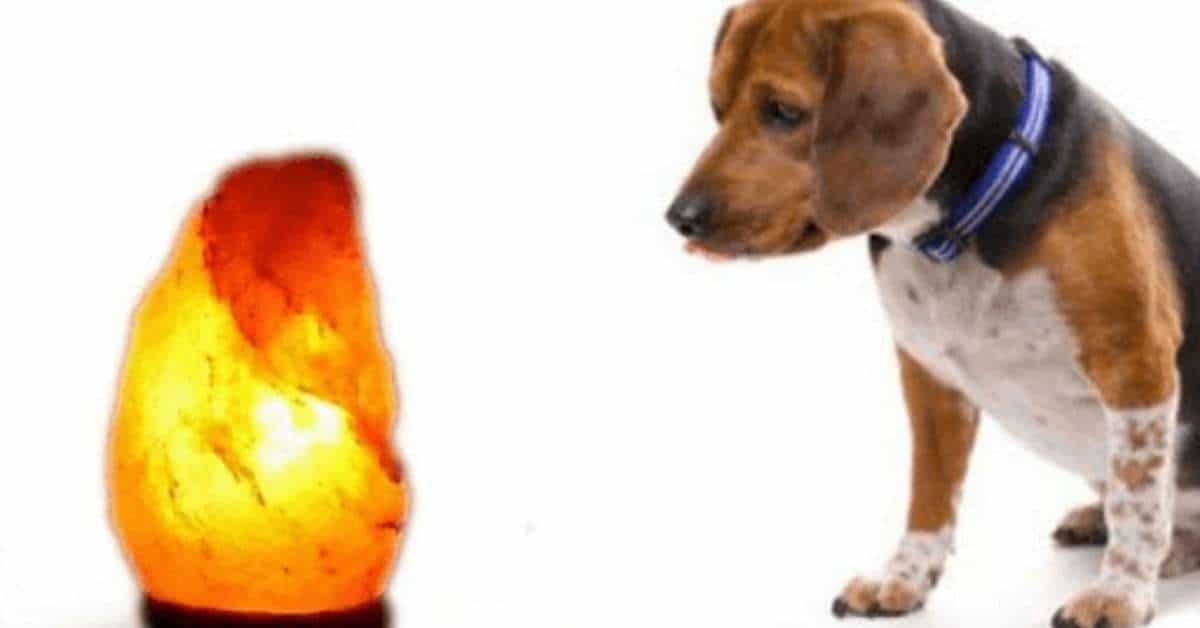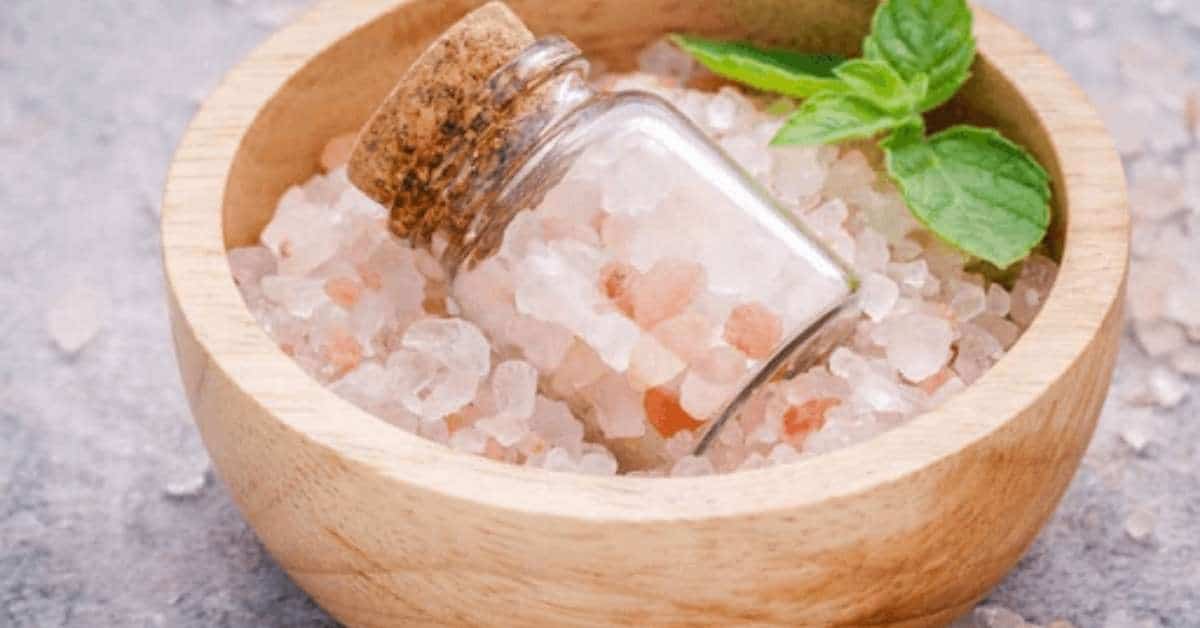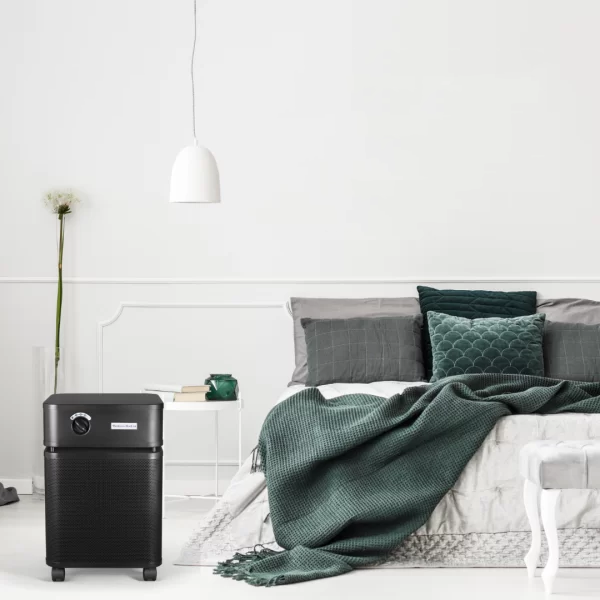Himalayan salt lamps DO NOT clean indoor air - air purifiers do. In this post, we'll be elaborating why you should not trust marketing schemes for salt lamps, which are claimed to purify the air.
The claims? Some manufacturers insist that Himalayan Salt Lamps do more than just light up the design of bedroom cabinets. They are also claimed as air cleaners, which can improve the air quality we breathe. Furthermore, these sellers also insist it can reduce asthma and allergies and improve sleep.
Example, check out the product description of this Himalayan Salt Lamp for sale:

These benefits may sound impressive, but there's not much scientific proof to back this up.
But which ones are true? Read on as we uncover the real benefits and myths of salt lamps.
What Are Himalayan Salt Lamps?

Himalayan salt lamps are crystal lamps, which are harvested from amber rock salts. Commercially sold as lamps, these natural amber lamps give off a soothing ambiance because of the way they are. The way you use it is you place a light bulb in its hollow space, and it gives off a reddish, mood-setting pink glow.
While it is entirely a decorative product, other people buy it believing the many health benefits it possesses.
Tracing its Origin
Himalayan salt lamps came from a mountain range called the Himalayas, which is about 1,500 miles across Nepal, Pakistan, Bhutan and India.

The real Himalayan salt lamps originate in Pakistan, from the Khewra Salt Mine. Miners harvest these reddish, white and pink colored rocks.
Salt in this area is believed to have existed for a very long time, and is distinct with table salt . The only difference is that it contains some minerals which give off a pink color.
Some salt lamps sold online are fake, which are more durable and give brighter reddish lights. The real ones are fragile and give off a dimmer kind of light.
Is Himalaya Salt Lamps Good for You?
Himalaya salt lamps are not bad in themselves. However, they can pose a threat if not used properly.
Are salt lamps dangerous?
Salt lamps are simply decorative lights and do not possess any known negative effect. So, you're free to use them if you love the warmth and calmness it brings. But you must ensure you keep the lamp in a safe place with low or no foot traffic, so it does not get knocked over. Also, practice general fire safety tips to prevent fire accidents.
Are salt lamps toxic?
Salt lamp ordinarily is not toxic but can become toxic for pets and children, especially because of their curiosity. A salt lamp will cause no harm to pets until your pet goes close and ingests it. Of all pets, cats are the most curious, and when they consume too much salt, it can cause salt toxicity. To prevent this from happening, keep your salt lamp away from the reach of your pets.
Are Salt Lamps a Hoax? Does It Work?
We cannot deny the aesthetic features of salt lamps, which include the pink color, the ambiance, and the soothing environment it provides. But if we are considering the supposed health benefits and air purifying abilities, these characteristics are still scientifically unproven and considered untrue.
Some people even claim that salt lamps produce negative ions which purify the atmosphere when it does not. Apart from providing light and a soothing environment, salt lamps are not so different from regular table salt.
So how does a salt lamp supposedly clean the air?
Among the alleged benefits of Himalayan Salt Lamps is that it improves air cleanliness and makes it healthier to inhale. But how can a lighting fixture do this?
Well manufacturers insist that salt lamps give off negative ions. If you watch horror movies, you'd find how shamans allegedly use salt water to trap evil spirits.
Salt absorbs water/moisture in the air and as it does, it also evaporates from its surface, giving off negative ions.
This is how ionizer air purifiers work - releasing negative ions to attract dust, pollens, pet danders and particles from the air and keeping them away from humans.

But do salt lamps help you breathe better?

There's no scientific evidence that backs up the claim that Himalayan salt lamps can purify the air by releasing negative ions from salt.
In fact, according to Snopes.com , there is no evidence and proof that Himalayan Salt Lamps do emit negative ions at all.
Salt has a face-centered cubic structure, which scientifically is not expected to generate ions. In order for it to give off negative ions, it must be subjected to a very high temperature of over 2000F. We don't see how a 15 to 45 watt light bulb can produce that amount of heat in order for the salt to generate ions.
Given that there are no mechanisms in Himalayan Salt Lamps that make it eligible in cleaning the air, they definitely cannot help people breathe better.
But if by some chance people find a way to alter the molecule structure to make salt produce negative ions, there will be drawbacks.
You see, if salt releases negative ions in the air, there's a chance that oxygen elements bind in a different way, producing ozone.
Ozone is a harmful gas molecule. Although the FDA states that it is generally safe at a limit of 0.05 parts per million , this level will still not be enough to rid the air from pollutants and odors.
Are salt lamps bad for dogs?

While people use salt lamps to set a calming mood, they don't realize that pets can treat it as something good to lick. Veterinarians say that it is bad for pets to eat too much salt as this can cause health problems.
If you leave your pet dog or cat licking too much of the salt lamp, it can hurt or kill them even.
Do Himalayan salt lamps kill viruses?
According to WebMD , some studies say that negative/positive ions can kill germs. But up to this day, it is not clear how the germ-killing takes place. As mentioned above, there's even no proof that salt releases negative ions. More so , there's no evidence that Himalayan Salt Lamps can kill viruses.
Health Benefits of Himalayan Salt Lamp

Now that we are clear that Himalayan Salt Lamps really don't improve air quality, can it somehow be used to improve your health?
Depression and Anxiety
Some studies found that high concentrations of negative ions can decrease depression levels a little. However, it doesn't have much effect on anxiety or sleep.
In a study where mice are subjected to high concentrations of negatively charged ions, it greatly improved serotonin levels. Serotonin is a key hormone that stabilizes moods and feelings.
Asthma and Allergies
Some advertisements even claim that salt lamps can reduce asthma and allergies. A 2013 review of 33 other studies from 1957 to 2012 claimed that collectively, exposure to negative or positive ions play a significant role in respiratory function, such as asthma and allergies.
But even if negative ions do improve the health and well-being of people, there's not much evidence to support that salt lamps even emit these ions, right?
Side Effects of Himalaya Salt lamps
Himalaya salt lamp is increasingly becoming popular for their aesthetic benefits. But it is not without its side effects. Below are some of the downsides.
Potential fire hazard
Being an electrical device, just like other electrical devices, Himalaya salt lamps can cause a fire hazard. The hazard can be due to misuse of the product or wrong wiring. If you have purchased a Himalaya salt lamp or want to, watch out for the dimmer switches. Ensure these switches are not defective or likely to overheat.
Unsafe for children
As salt lamps are known to be heavyweight, placing them carelessly can cause them to fall and injure children. Therefore, if you possess a Himalaya salt lamp, keep it out of the reach of children. But do not place it on a high shelf so that it would cause only minimal or no damage peradventure it falls. Or find a stable, firm, and secure place to keep the lamp.
Dangerous for pets
Pets are attracted to salt lamps and often lick the salt. Consuming excessively results in salt toxicity, and pets may vomit, become drowsy, and have seizures, to mention a few. So, keep your salt lamp secure and inaccessible to pets, especially cats, since cats can climb shelves to access the salt lamp.
Himalaya Salt Lamp Warnings
Whether you are purchasing a new Himalaya salt lamp or already have one, you must be sure that you are not exposing yourself to danger. Here are a few tips to help keep you safe while you use your salt lamp.
- Purchase only safe products. As said earlier, salt lamps may pose a fire risk if they have a defect in their wiring or are prone to overheating. To prevent this, purchase only safe products with UL (Underwriters Laboratories) safety stickers. This sticker affirms that the product's wiring has been certified for safety.
- Keep away from children and pets. The effects of making salt lamps accessible to children or pets were discussed earlier. So, to prevent injury or salt toxicity, keep your salt lamp in a secured place that is not easily accessible.
- Use recommended safety tips. These tips include buying an authentic salt lamp and following the manufacturer's guide on how to use it. Also, if you keep a salt lamp on all day, ensure you turn it off when leaving home, just like you do for your other electrical devices. Check the wiring for defects or the possibility of ignition.
- Salt lamps are not safe to leave on. While some people enjoy the warmth produced by salt lamps all day, others prefer the glow only at night. None of these pose a risk, except if you leave your salt lamp on when you or no one is home. But even if you're home, ensure it is in good condition and fit for use.
Bottom Line
In terms of air purification, there's no scientific evidence that Himalayan Salt Lamps can clean the air in your house. Yes, it has a soothing, pinkish color. But apart from that, that is the only thing you can get from a salt lamp - its decorative features.
It does not emit negative ions that can clean the air, reduce stress levels, or decrease the level of depression.
So if you need something to clean your air from dust and viruses, without ever harming your pets, choose a True HEPA air purifier with UV light . The True HEPA filter traps tiny particles up to 99.97% down to the size of 0.03microns. At the same time, the UV light passed through it will kill the virus, even COVID-19.







